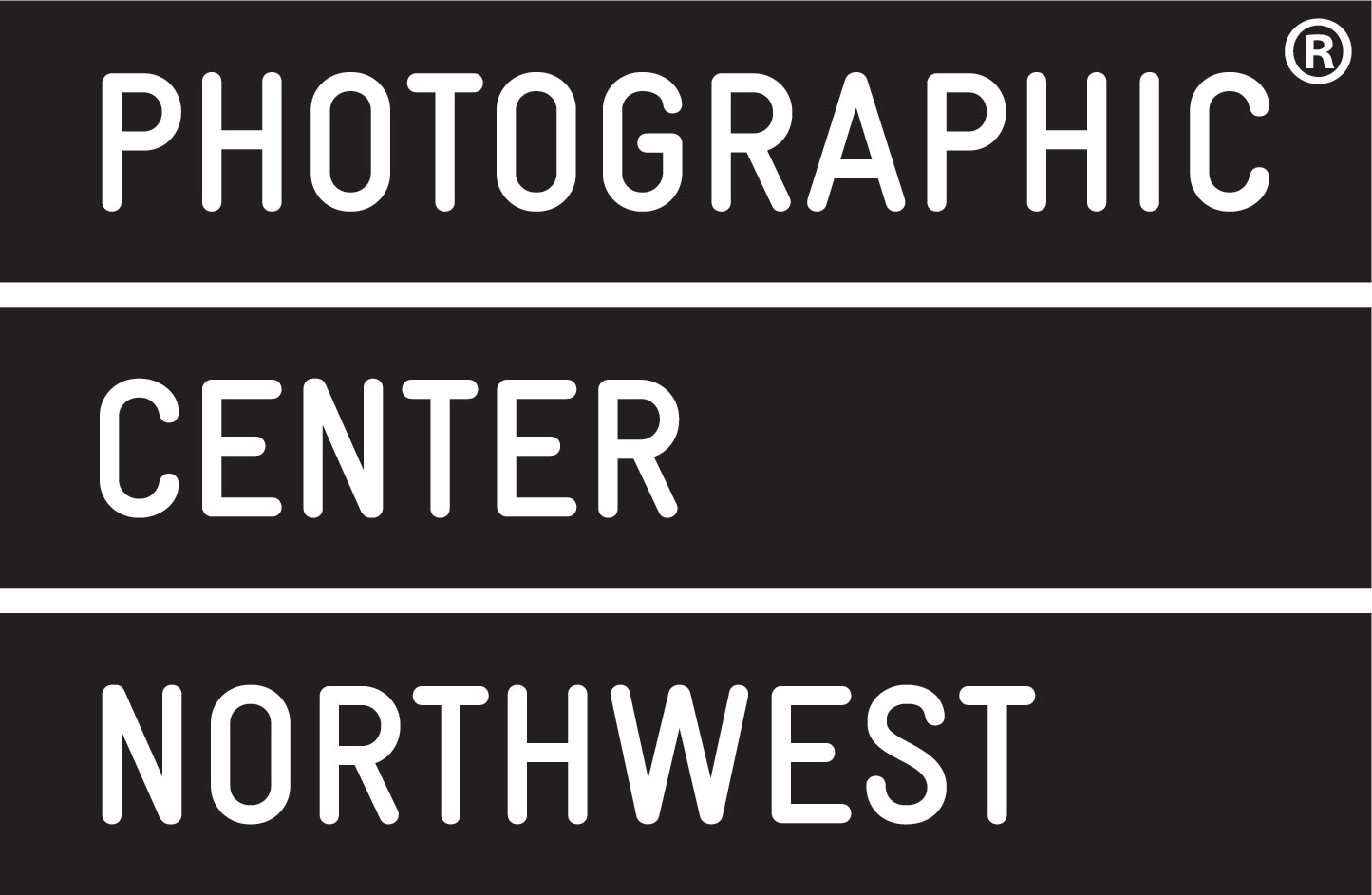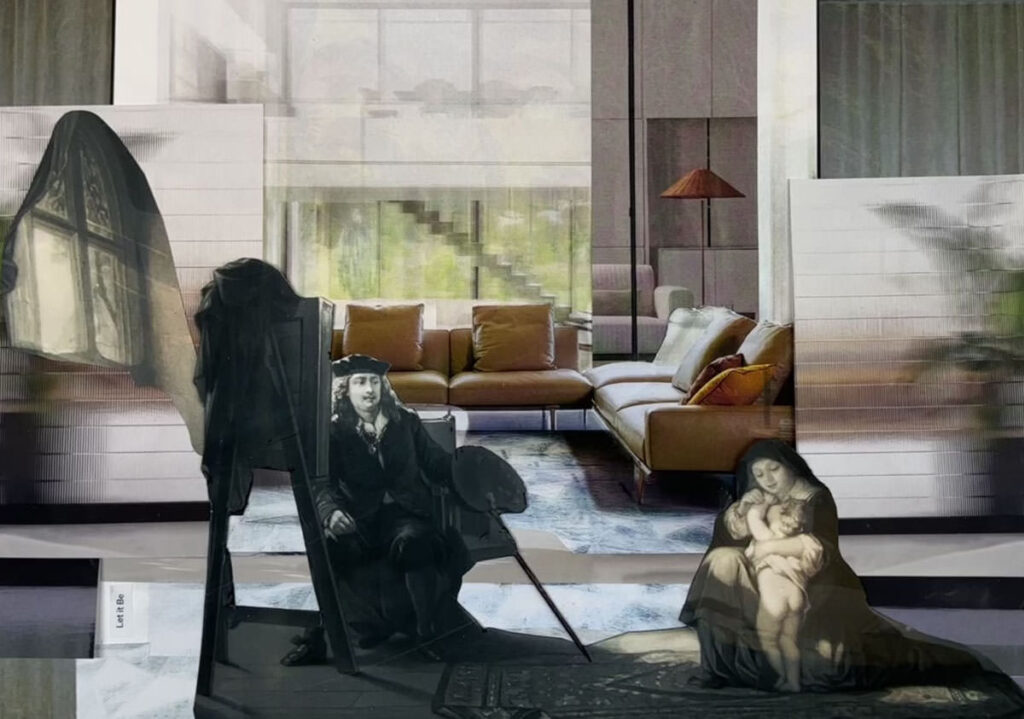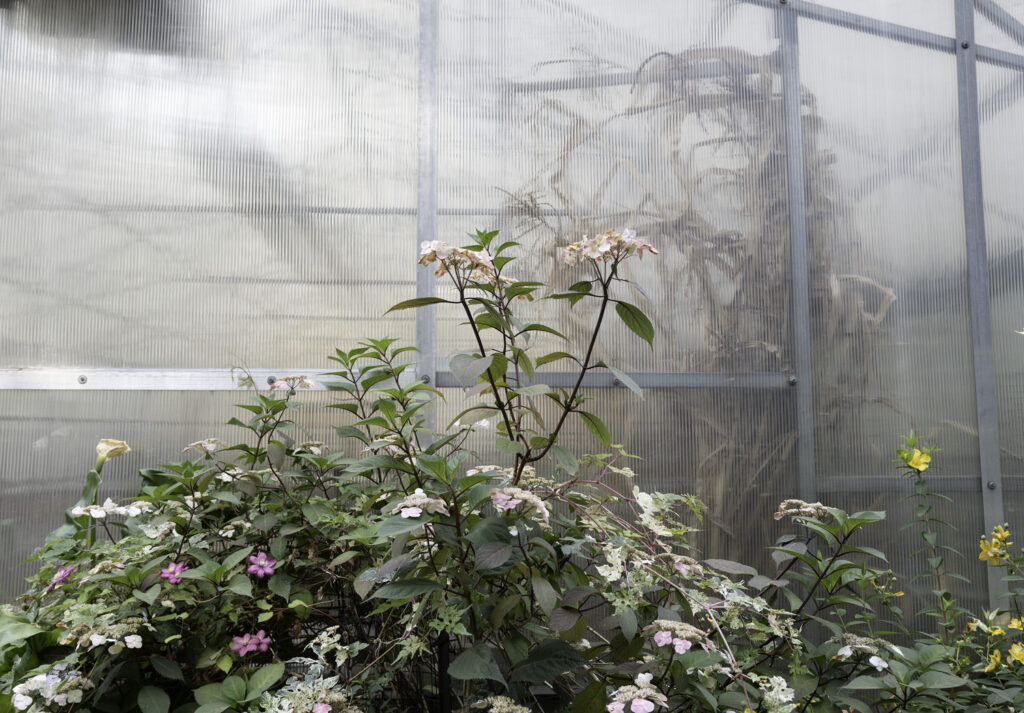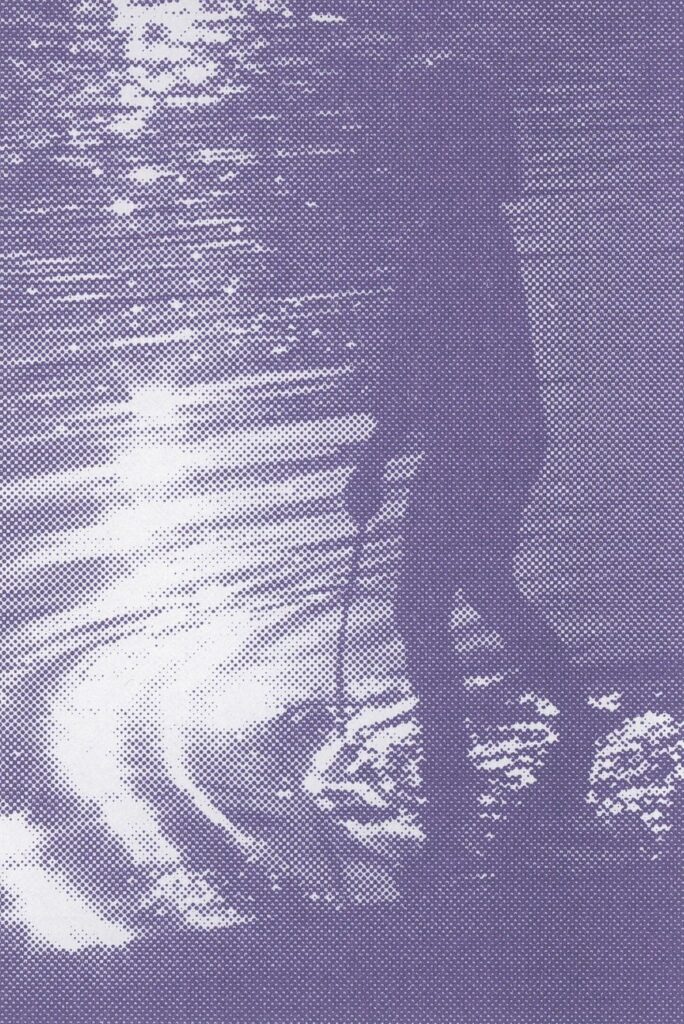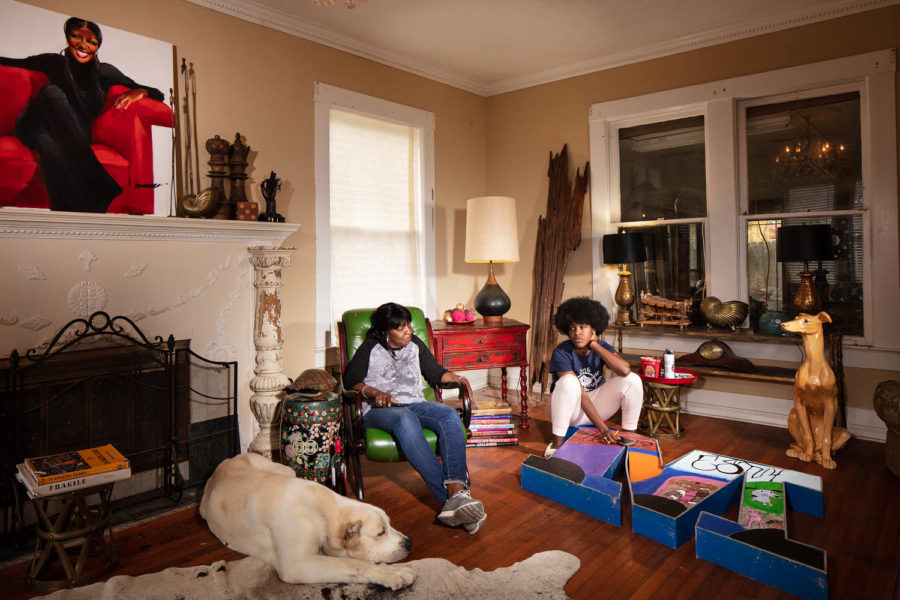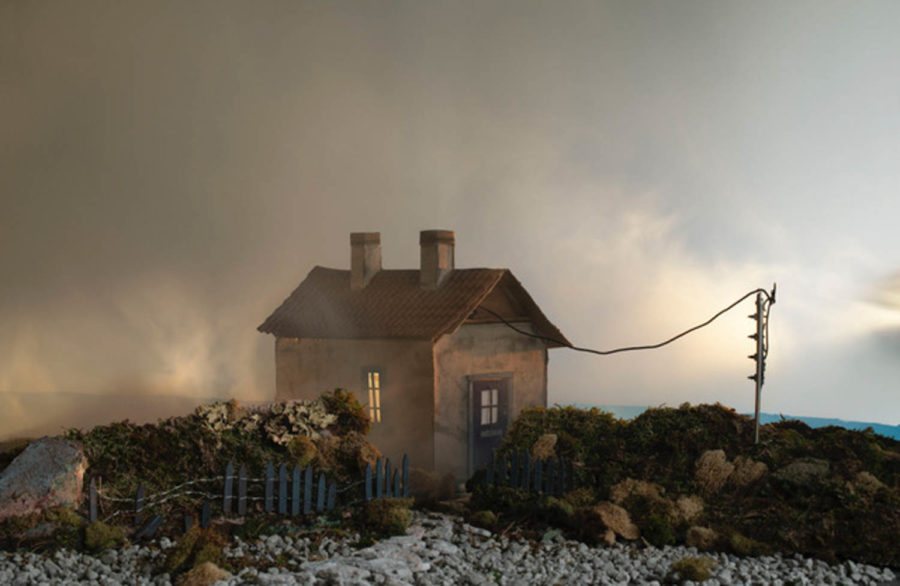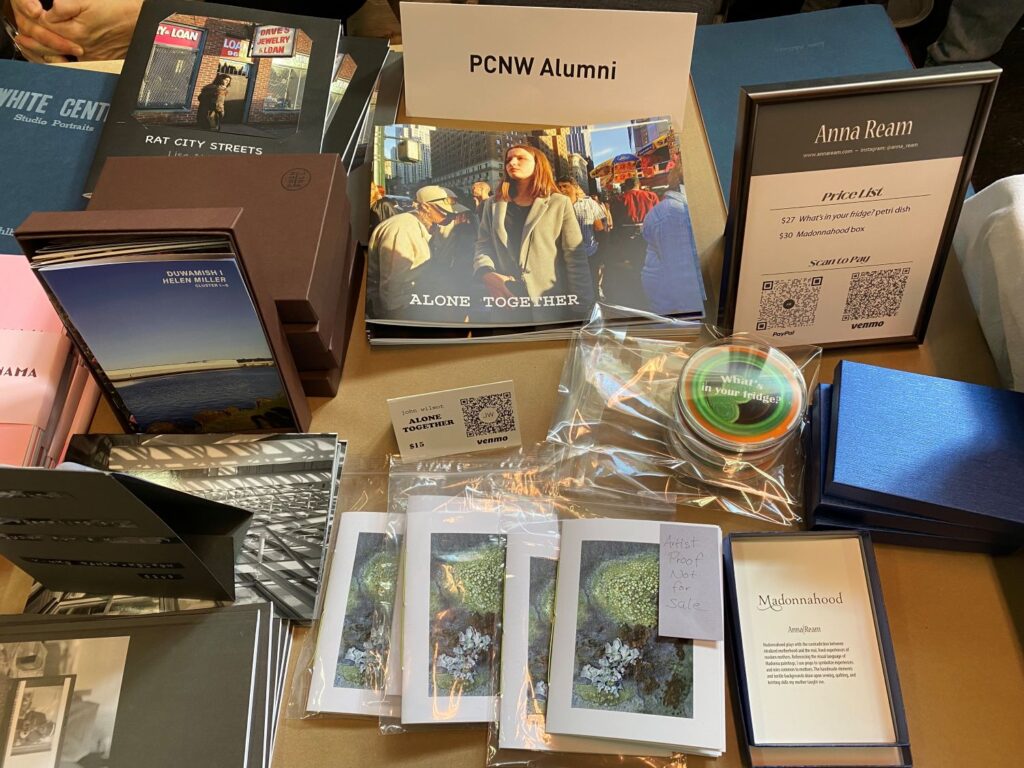
Image Credit: Lisa Ahlberg, Alumni Table at PCNW Photo Zine & Book Fair 2024
In the News
We had great fun at the PCNW Photo Zine & Book Fair in August 2024. The following alumni participated as exhibitors: John Wilmot, Eva Skold Westerlind, Cian Hayes and Al Varady of Solas Gallery, Jenn Reidel, Matt Ragen, Janet Politte, Gwen Emminger, Andy Holton, Jenny Hansen Das, Rachel Demy, Lisa Ahlberg, Anna Ream and Jon McClaren. Many of us made our first zine.
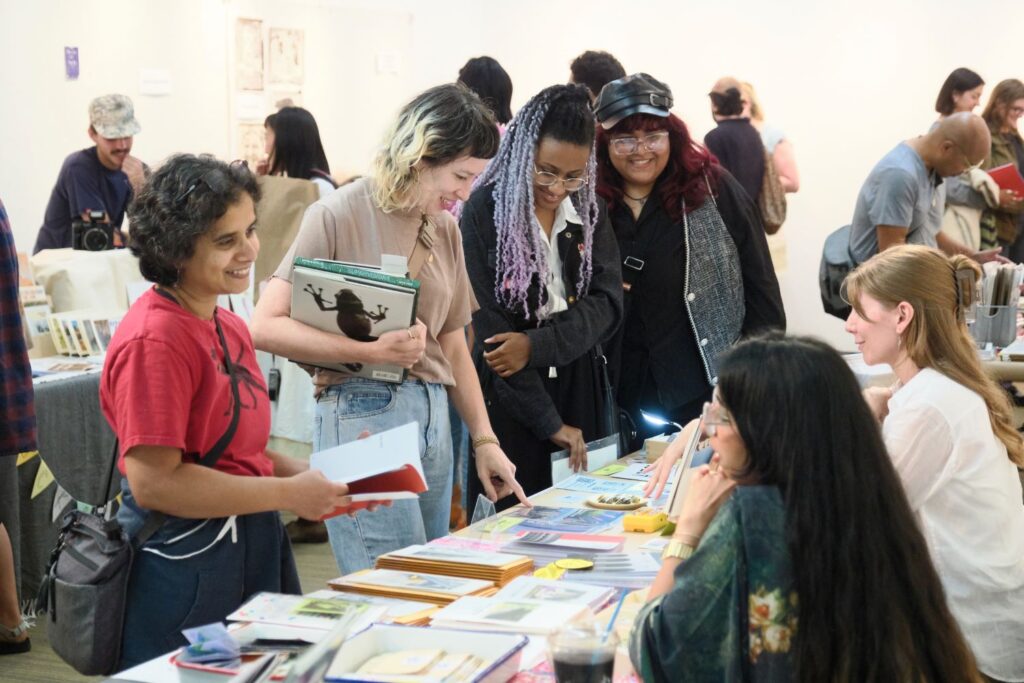
Image Credit: Danny Ngan, PCNW Photo Zine & Book Fair 2024
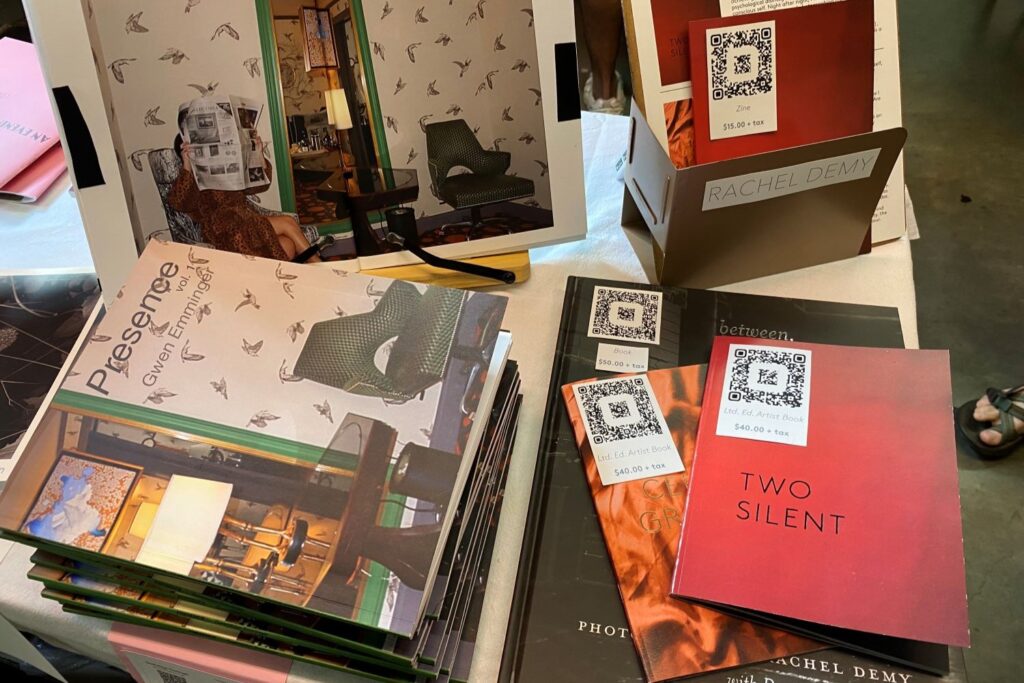
Image Credit: Lisa Ahlberg, Alumni Table Detail at PCNW Photo Zine & Book Fair 2024
Alumni Marianne McCoy and Eva Sköld Westerlind were featured in the PCNW Summer 2024 Member Showcase.
Students and alumni joined to support Lens Flair: PCNW’s Benefit & Auction in many ways — as donating artists and volunteers, buying photographs in the silent and live auction, and donating during the Raise the Paddle. Thank you everyone! It was a fantastic event, and we raised just over $205,000!
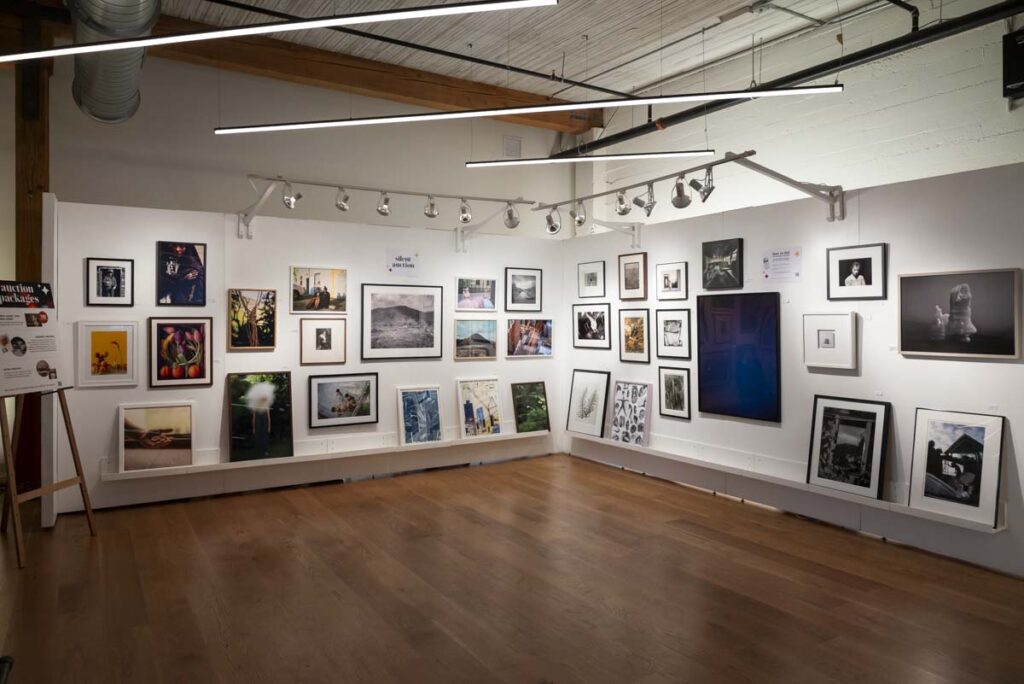

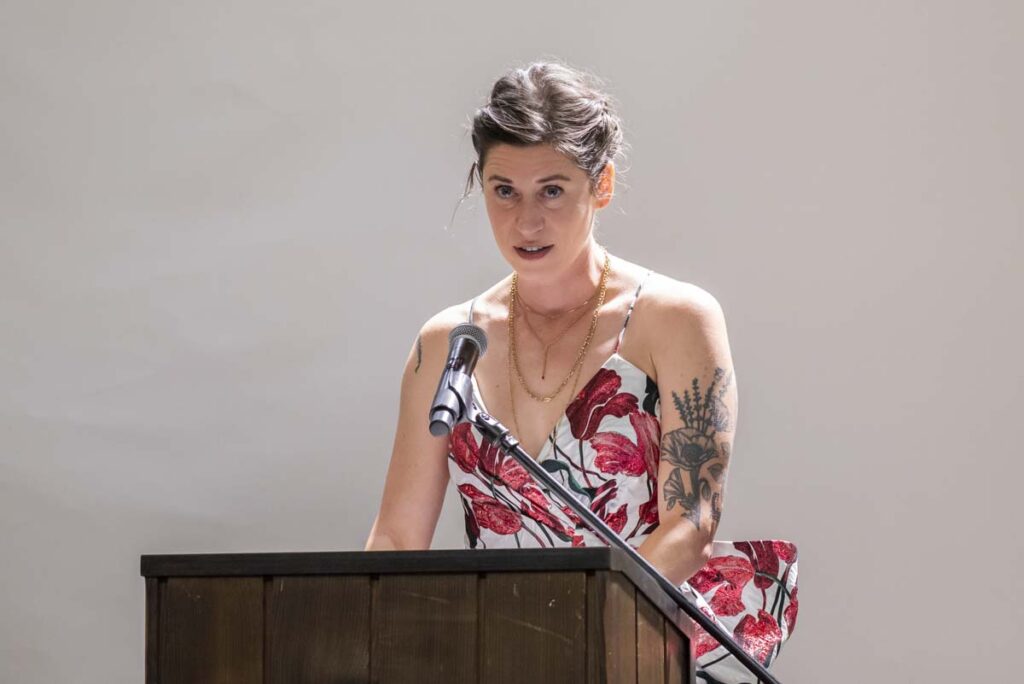
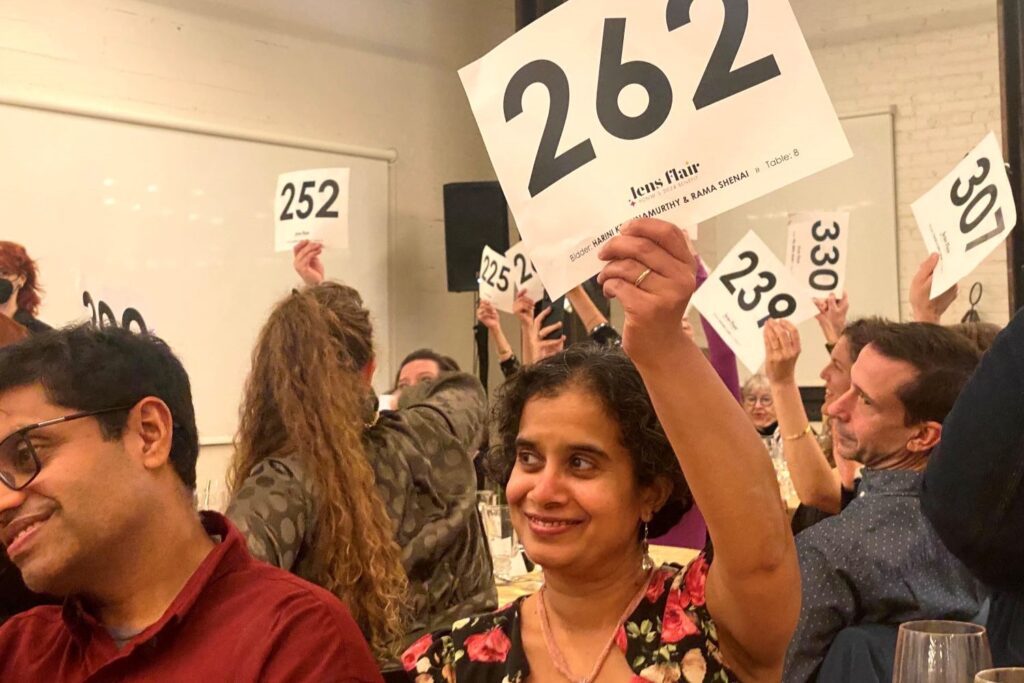
Image Credits (L to R): Robert Wade, Silent Auction installation; Alumn Rachel Demy speaking; Alumn Gina White’s photograph displayed by alumn/volunteer John Wilmot during Live Auction; & Lisa Ahlberg, alumn Harini Krishnamurthy joining in Raise the Paddle
Alumni Highlights
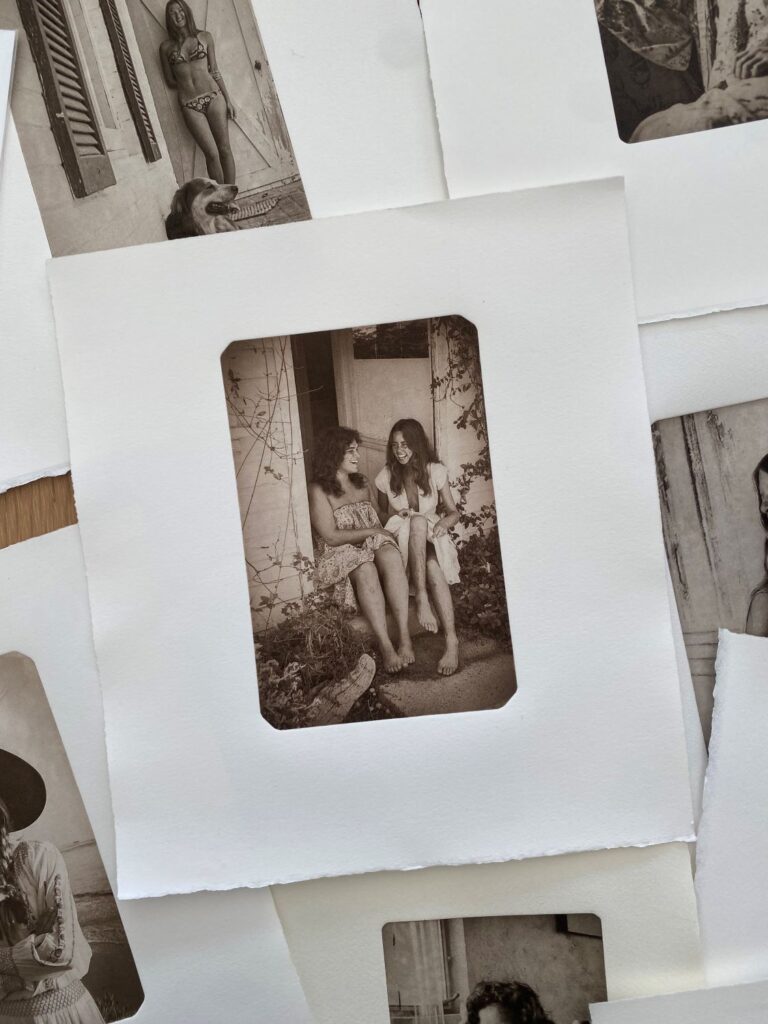
Image Credit: Cheryl Hanna-Truscott, We Are Stardust Photogravure Prints
Cheryl Hanna-Truscott
graduated 2009
interview by Lisa Ahlberg, grad. 2005
I was thrilled to see your photogravure prints from “We Are Stardust”. I had seen a few images years ago from these negatives from the 70’s and am a big fan. What are you up to?
We Are Stardust, a photographic portrait collection, honors my friends, acquaintances, and strangers of the early 1970s, revealing nascent personal power through clothing and expression. We had come of age in a time fraught with rapid social changes: Civil Rights and Black Power movements, assassinations, watching the horror of the Vietnam War on television, campus unrest, growing environmental awareness, the allure of Eastern philosophy, experimentation with mind altering substances, and the rise of feminism along with reproductive freedoms – all this accompanied by a rock ‘n roll soundtrack echoing our lives.
I stayed an extra year in our small coastal town after graduating from a Southern California university. I had lost my direction and was searching for a meaningful life during this personally and socially deeply unsettling time. I had taken a few photo workshops but my vision relied mostly on emotional connection rather than technical proficiency. Through these collaborative portraits, I found risk-taking, playfulness, and purpose. I used a manual 35mm camera, and then processed my film and printed images in my makeshift bathroom darkroom. I wanted to make portraits that I believed men could not make. I felt empowered!
I look back over the past 50+ years and still connect and love what comes through with these portraits.
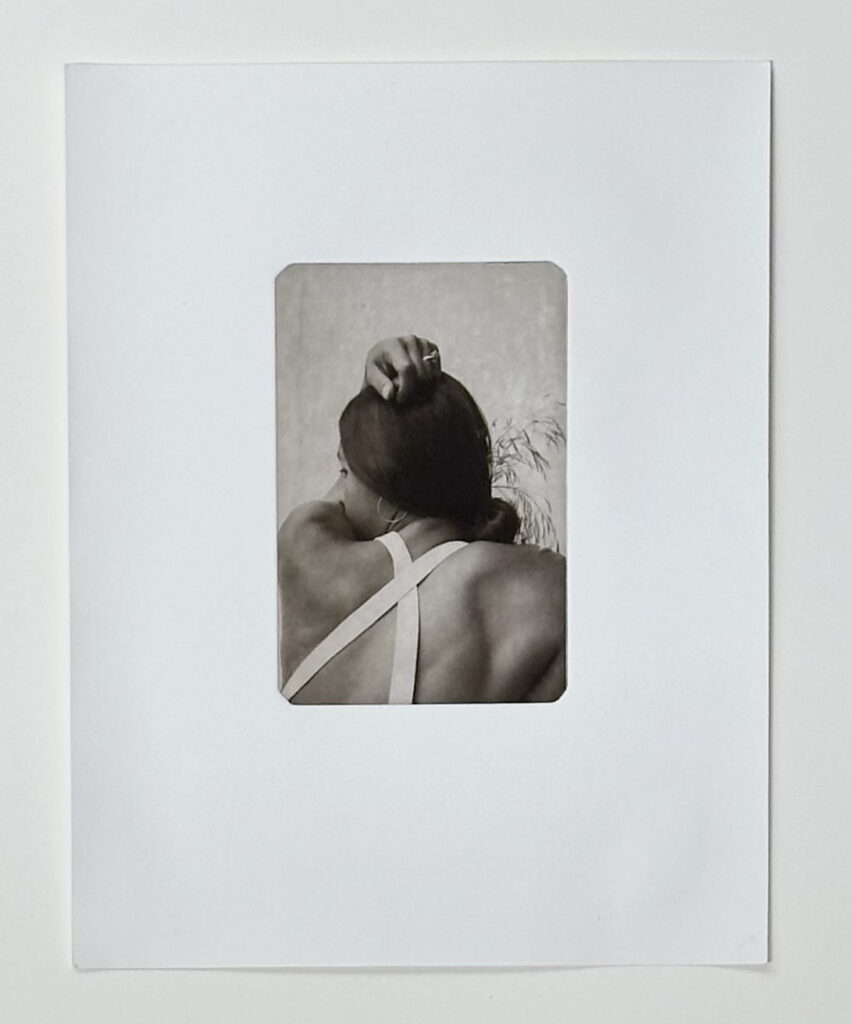
Image Credit: Cheryl Hanna-Truscott, Joy, 1972 from the series We Are Stardust, Photogravure Print
What is your vision for completion of this work?
I am working on a zine and will include one photogravure piece in each. And, it would be fun to share in some way my 1970s work at the university. Then I will move on to making zines/books of other major projects I’ve done over the decades…making my own retrospective.
How did you decide on the photogravure for this project?
Photogravure printing harkens back to the 1800s – Stieglitz, Strand, ES Curtis. Modern refinements have made it a less complicated and toxic process so learning how to make photogravure prints has become more accessible. Photogravure is a process that combines analogue, digital, and hand skills. The result is an embossed print made with inks using an etching press on fine art paper. Photogravure printing lends itself to classical and timeless imagery and tends to amplify those qualities in the images I choose to render in this process. But it can also be used in more playful imagery.
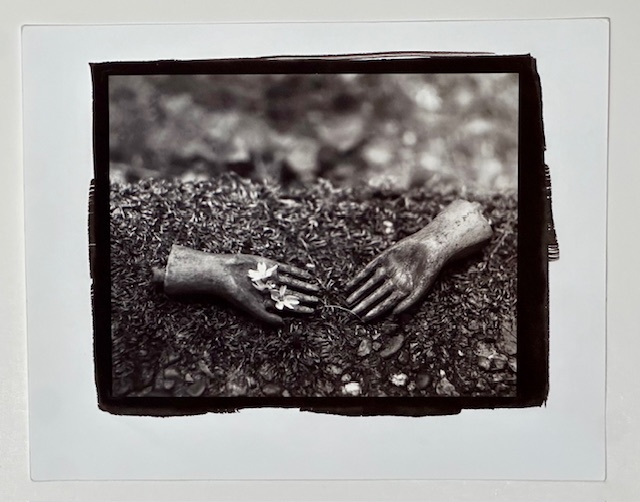
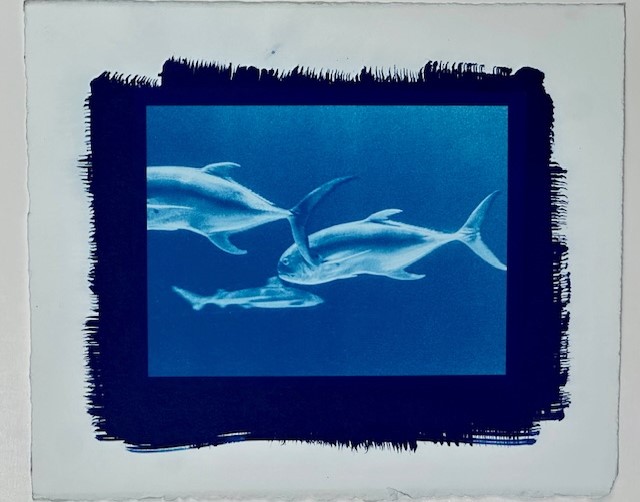
Image Credits: Cheryl Hanna Truscott; Left: Tiny Hands, Kallitype Print; Right: Fish, Cyanotype Print
How did you accumulate all the knowledge to make these gorgeous prints?
I had been a fan of Ray Bidegain’s platinum palladium photographs for several years and when his photogravure workshop was announced at PCNW, I was immediately drawn to experiment with this. I’ve taken several workshops with Ray and have continued learning from him through zoom. I’ve also bought an informative book by Clay Harmon, explored the internet, joined a FB photogravure group, and watched several YouTube videos. For several months, I joined the community printing studio at BARN (Bainbridge Artisan Resource Network) and have learned from other printmakers.
Why is mining old negatives important to you?
Early in life, I discovered my fascination with photography through my parents. My father was an accomplished photographer and my mother shared stories about herself, family, and friends while showing snapshots. My parents left me with many boxes of negatives, slides, and photographs, including albums from the early 1900s. One of my hopes is to sift through and find the treasures in this massive collection to make something coherent from them to pass on to my children and grandchildren. It’s a daunting, difficult, informative, and amusing task! This is in addition to the bazillion images I’ve made over the decades.

Image Credits: Cheryl Hanna-Truscott
Left: Alice and Duke Hanna II, My Paternal Grandparents, Photogravure Print
Below: Mandy and Dionicio (9 months old) from series Protective Custody — Within a Prison Nursery, 2009
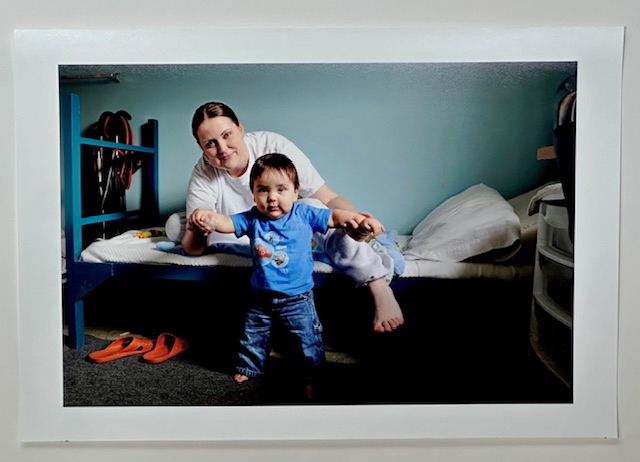
Anything else you’d like to share?
I would like to connect to photographers wanting to learn or already involved in photogravure printmaking. There is so much to share with each other! After realizing the commute to BARN is not sustainable from my home in Gig Harbor, I decided to buy a small tabletop etching press to continue working with photogravure in my home. I invite other photographers interested in photogravure to come visit and see how it works.
For more about Cheryl Hanna-Truscott:
www.hannatruscott.com
Instagram @hanna.truscott
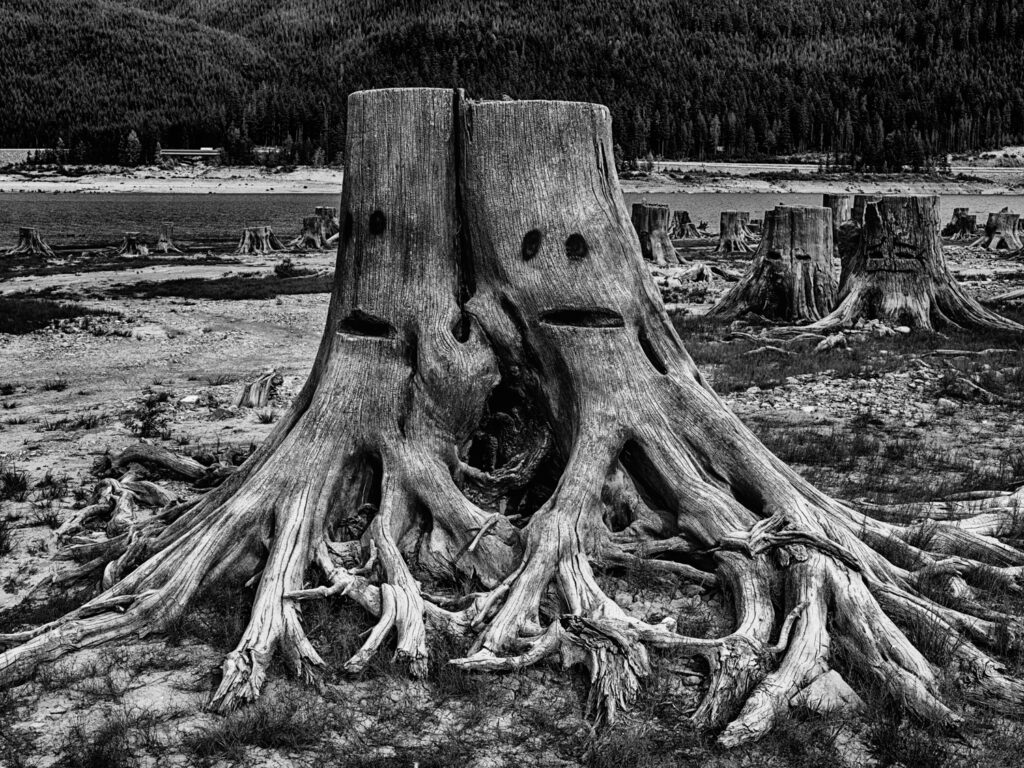
Image Credit: Matt Ragen, Together Forever
Behind the Lens: A Conversation with PCNW Alumn Matt Ragen
graduated 2022
interview by Gwendolyn Emminger, grad. 2022
What draws you to photography, and how do you maintain your artistic practice?
Starting in the mid-80s, for almost 35 years, I worked for large technology companies in a variety of roles. Sometime around 2005, I started to feel the impetus to create something new. I had taken some photography classes in college in the last millennium and, in the early 2000s, digital photography was just starting to come into its own. I was traveling a lot and figured that I could learn Photoshop in the two weeks a year that I was sitting in a seat on an airplane while traveling on business. In 2012, I built a darkroom in one of the coal cellars in our basement. By 2015, I was fully engaged in coursework at PCNW. In my thesis year, I kept a foot in the technology business but now I’m putting about 80% into the not-for-profit world of fine art photography, however you want to define that.
To keep myself fresh, every 1-2 years, I learn a new process as a way of testing whether the
images I get from my camera will benefit from a different way of making prints. I also occasionally submit photographs to magazines – it’s always a thrill to see my work in print and I hope that it inspires others while maybe finding an audience for my work. Finally, I’m starting a new practice of trying to publish one book or zine each year. This makes me look at projects in a different way and, ultimately, a book format gives me a different kind of outlet to get my work seen.
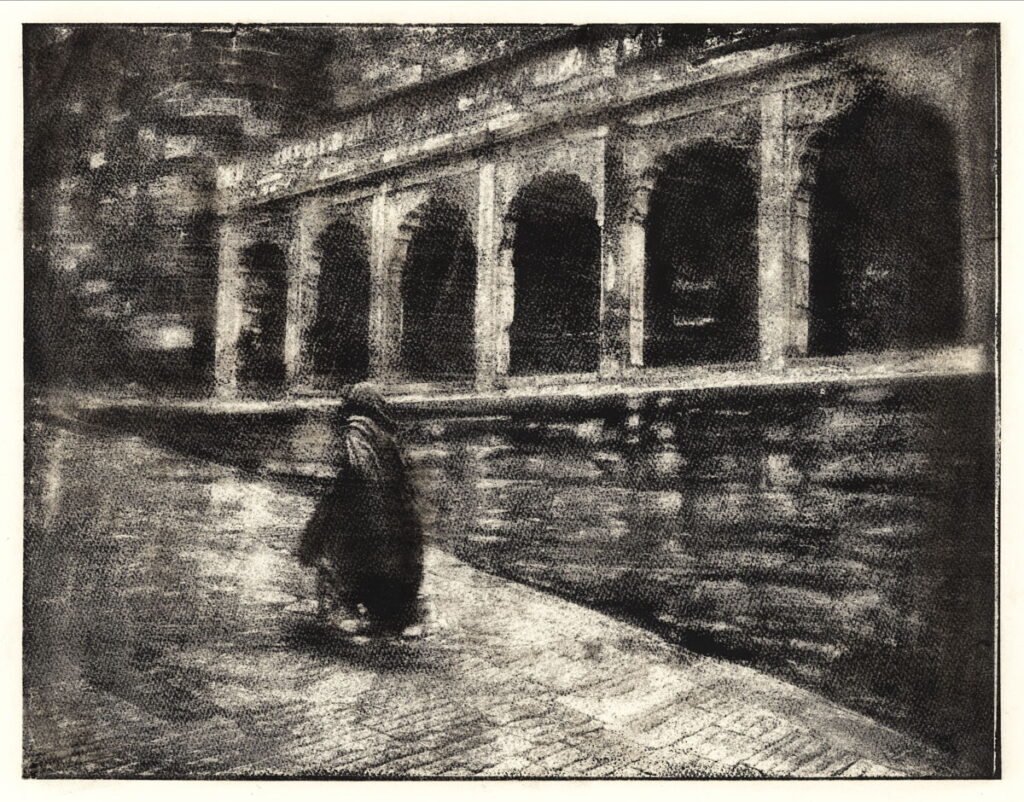
Image Credit: Matt Ragen, Walking To The Mehrangarh Fort
Can you describe the variety of work in your current show at Domicile Gallery in Madison Park?
The exhibit is more like a survey of several bodies of work rather than a single subject. The most recent work is a series of photographs from my travels in India. These images are made with the gumoil process which uses oil paint on paper. They are about as large as I can print in my current studio. The second series is from a body of work titled “If They Have Eyes, Can They See?” These images are silver gelatin prints and describe what I saw and felt walking through the remains of an ancient forest that was logged just over 100 years ago. The show also includes one set of prints made with the platinum/palladium process and another series of cyanotypes. Finally, I included a set of archival pigment prints from urban ruins in Detroit and suburban Atlanta.
How has your work evolved since completing your thesis program?
I still make the same photographs but, now, I have learned to think more about how all of the photographs might fit together. At any given point in time, I may have 3-4 different projects that I am working on. Sometimes, it’s about finding a spark of an idea where I can mine my archives to find images that complete a theme – and, other times, it’s about recognizing when I have been lucky enough to stumble upon a project that fits together. In the last year, I have worked on: a series of character portraits and street scenes from India; a set of anthropomorphic images observed in nature; and a photojournalistic project from a visit to a hat manufacturer in Los Angeles.
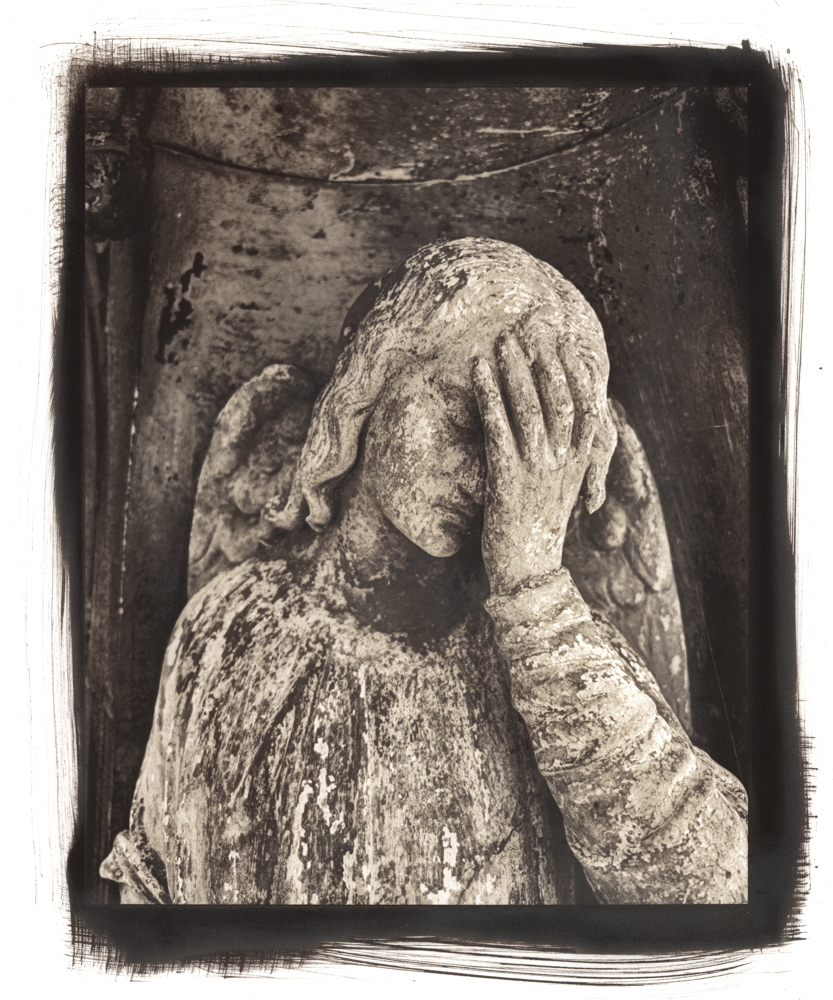
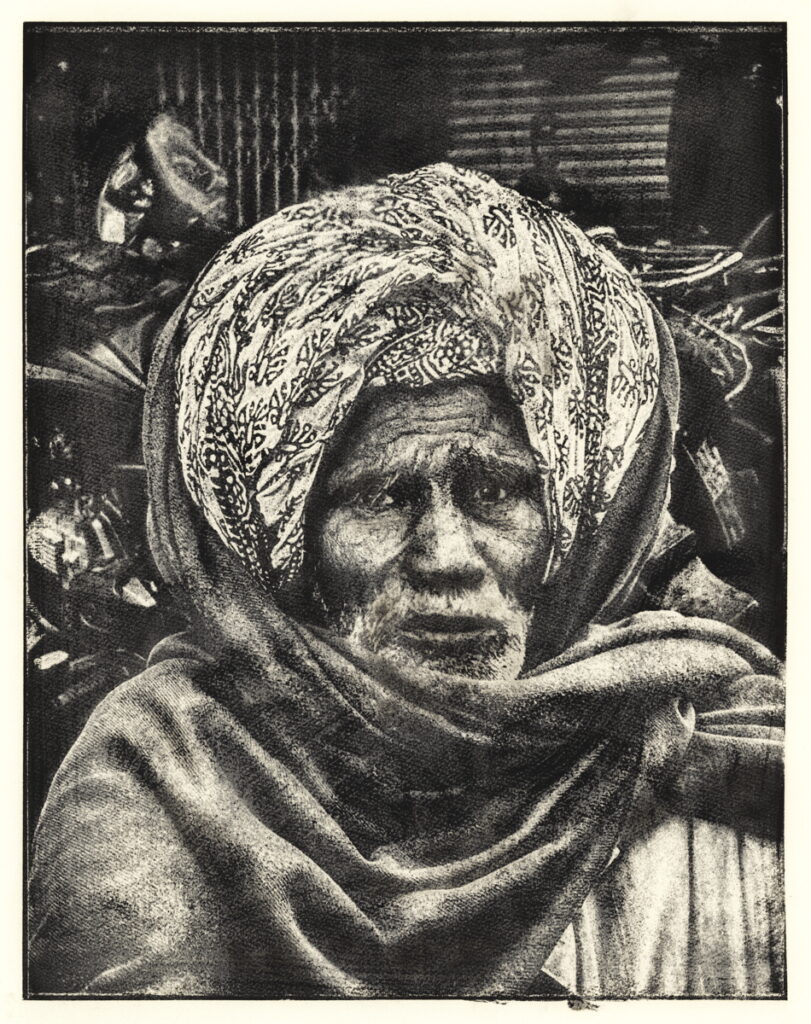
Image Credits: Matt Ragen; Left: Sad Angel; Right: Motor Bike Repairman
You’ve been experimenting with different processing techniques, including alternative processes. Do you have a favorite? What interests you about it?
I make my photographs with both digital and analog cameras. I fell into the alternative process rabbit hole with a class on bromoil at PCNW taught by Gina and then followed up with a week-long workshop offered by David Lewis. I was immediately attracted to the process because the hands of the photographer are directly connected to the image through the use of brushes and ink. The resulting image can be modified by softening or hardening the ink, by modifying the number of layers, and by the type of brushes used. Coincidentally, as I learned about bromoil, I discovered that my great aunt had worked as an assistant to Frantisek Drtikol in Prague in the 1920s and I have several bromoil prints that she made from that period. So, I guess it runs in the family.
From there, I have learned about platinum/palladium, cyanotype, salt prints, cyanotype-on-glass, kallitypes and most recently, gumoil. And, this year, to bring color into what has been a monochrome world, I’m starting to chase down the tri-color gum bichromate process. I don’t have a “favorite” process. Now, when I work on a project, I think about which of these processes is going to be most applicable. I think about what I want the texture and tone to be – in the prints and I think about how the limitations of each process are going to enhance or detract from the final result. I may test several processes with a few sample images to pick the process that most closely matches the mood that I want to portray. In the last year, I have worked extensively with the gumoil process which uses oil paint to create photographs. Gumoil was “invented” in the 1990s by Karl Koenig who has Seattle roots. This process results in images that have a lot of texture – it matches really well with images of urban ruins or character portraits that have lots of detail. Using oil paint is interesting – one benefit is that you can easily create a monochrome image with a wide variety of color shades. One drawback is that the oil paint can go anywhere. I make my prints in my studio basement because Gina’s never going to let that paint get into the sinks in the alt process room. I’m attracted to gumoil for the process, the broad range of pigments that I can use, the fact that every print is essentially unique and, finally, because it is very uncommon. An internet search turns up only a handful or two of photographers that employ the process consistently.
Is there a common theme or thread in your work that you can identify?
I’m probably more old-school than I’d like to admit. I like to see photographs on paper. Ideally paper that has some kind of exposure to a darkroom, chemicals and water where the presence of my hand is visible. I often go into the world without a plan and make photographs from what I see and experience. I used to say that I made picture of things that did **not** talk back at me but I broke that rule in 2019 with a series of street portraits in Cuba that I printed as palladium images. In short, now I try to think of how I can break the other rules.
How do you choose the subjects for your work?
I know it when I see it? Seriously, sometimes I fall into a project with a burst of activity on a single subject when the images just fit together seamlessly. Other times, I get an inkling of an idea with a few photographs and then manufacture a project by digging around my archive of old images to see if I have any photographs that might match that theme.
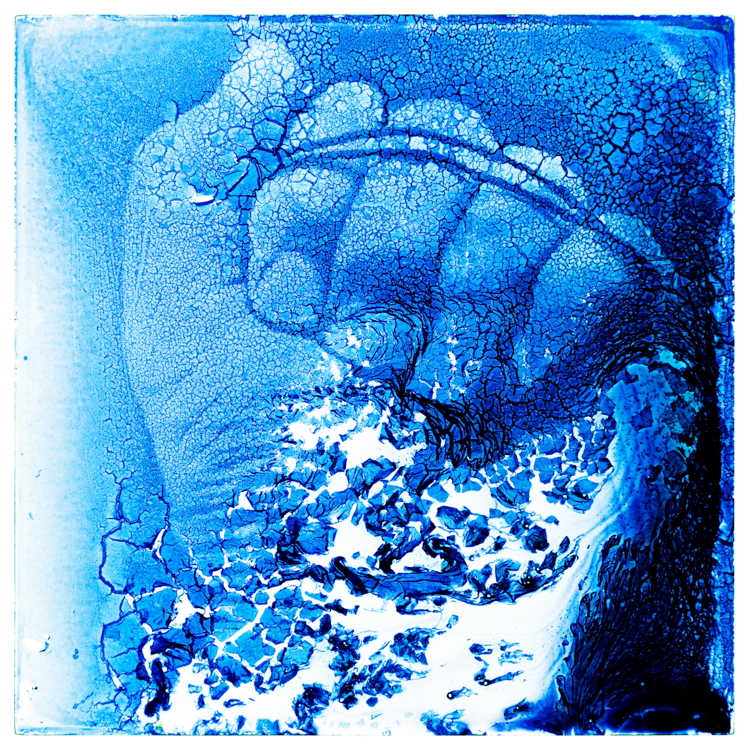
Image Credit: Matt Ragen, Stubborn
You created cyanotypes for your thesis that reflect your family history. Can you share more about your project and its evolution into making it a book?
It all started in Junior Seminar when Liz gave us an assignment to explore photographs by Sally Mann. From there, it really is a story both about process – and about content. I’m kinda sorta an obsessive process geek and I really liked the photographs made with the wet plate collodion process. The images were representative but they had small flaws/defects that resulted from the process. I thought that was interesting but I didn’t want to start down the wet plate collodion process as I thought that the learning curve might be too long and because I didn’t want to work with ether and some of the other chemicals. So, I started to explore other techniques that might deliver the same kind of esthetic. On the Internet, I discovered an obscure corner of photography where folks were printing cyanotypes on glass. I made a few test images and quickly discovered that the gelatin substrate had a tendency to fail when it was developed in water – it might move, shift, fold over itself or dissolve. But, I also found that the resulting images were just as interesting as the ones that came out perfectly. I hunted in my library for photographs where this might be effective and found a set of Holocaust memorials from various travels in Europe. The initial prints met my hopes for impact but I ran into a brick wall or two during some of the Thesis critiques. On reflection, I realized that the faults in the image could be used as a metaphorical way to hide certain elements of the photographs and, so, I started to look at my Thesis work as a way to tell a story of secrets. So, I needed a story of secrets and I realized that my mother’s father had a secret that he had kept for 50 years. For my thesis project, I chose to focus on that idea of secrets and I made a series of photographs that allegorically referred to my grandfather’s secret. At the same time, I started to work with a museum in Seattle to exhibit a broader set of my thesis photographs and received a 4Culture grant to help fund the costs. But, the photographs are often abstract enough that the meaning and intent is not always clear. So I started to conceive of a companion book that would guide a viewer through the experience. I pulled together a narrative of material from my grandfather’s memoirs and other papers and have now completed a maquette of a book that I’m testing this year and hunting for a publisher.
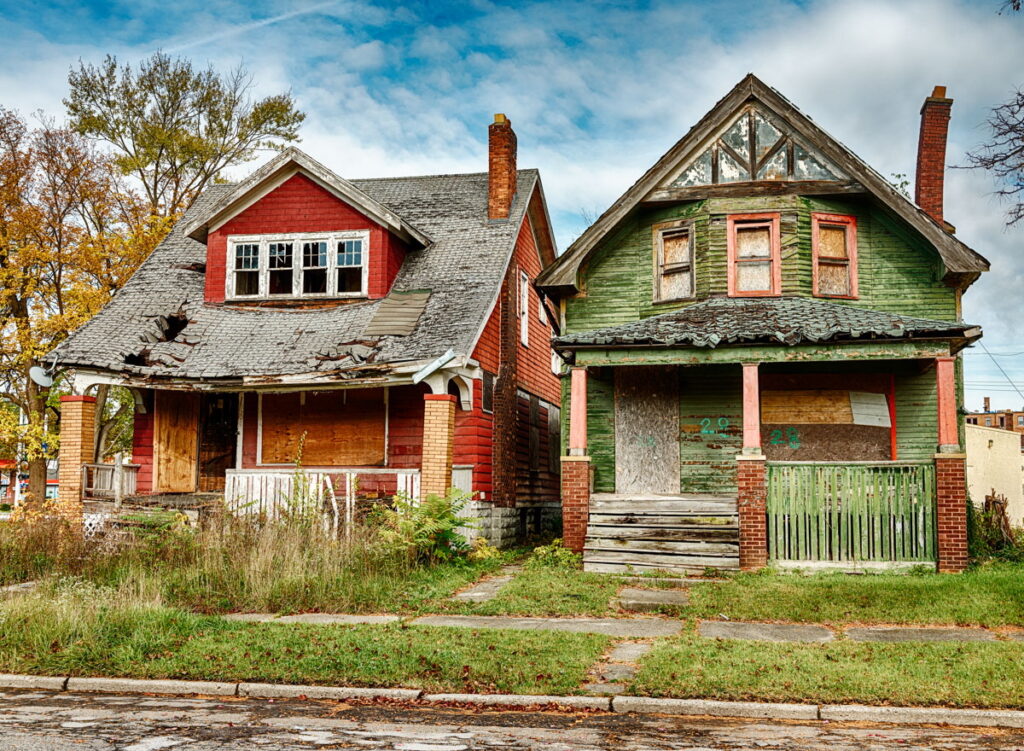
Image Credit: Matt Ragen, Red and Green Houses
Is there anything else you’d like us to know about our work?
As I’ve run down this new thing (for me) of becoming a photographer, I am intrigued by the challenges of reinventing myself. By that, I mean that when I was working for Microsoft and Amazon, I was defined by the jobs that I had, the people that I knew and worked for, the projects and products that I brought to market, and so on. But, being an “emerging” artist in the photography art world is hard. There is a lot of good work out there. Really good work is created by lots of photographers including many of the PCNW alumni. I suppose that we all chart our own course but that doesn’t mean that I wish it were easier. I am obstinate enough that I will continue to make the work that has value for me and hope that someday, the eyeballs of the art world will catch up. Here is to wishing you all luck in the same endeavors!
For more about Matt Ragen:
www.mattragenphotography.com
Instagram @mattragen
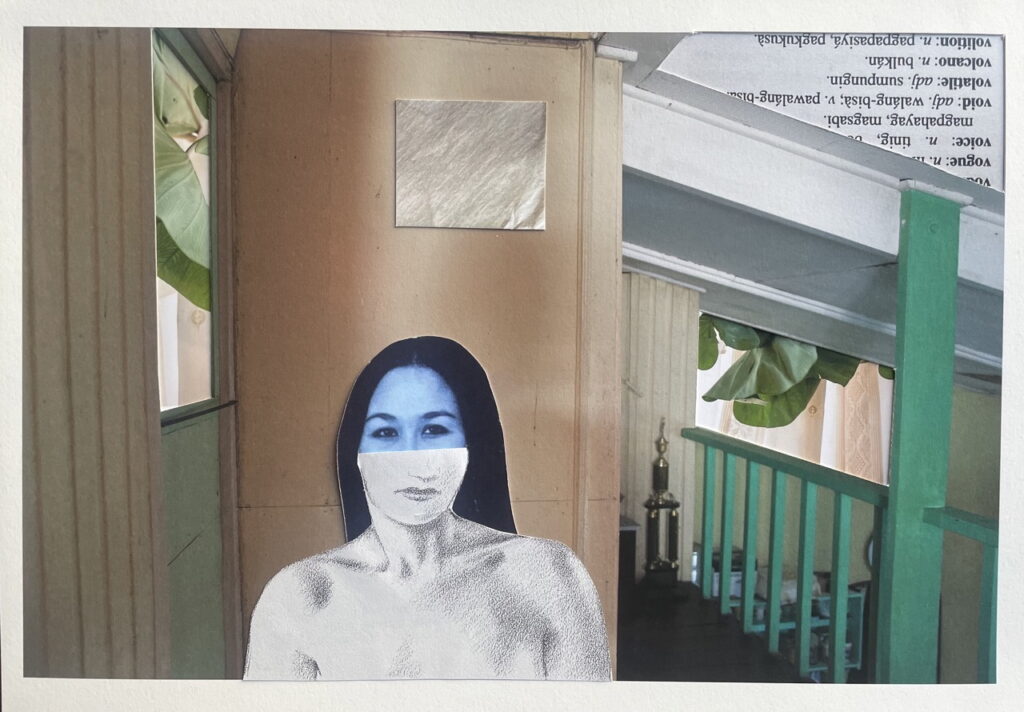
Image Credit: Elisabeth Vasquez Hein, What choice did I have
Elisabeth Vasquez Hein
graduated 2019
interview by Joan Dinkelspiel, grad. 2017
How would you briefly describe yourself and your work?
I would describe myself as a Filipina American photographic and literary artist who creates via digital photography, analog collage, creative nonfiction and poetry. I’m currently at work on a memoir as well as a photo book – both projects explore themes of ancestral healing, mixed race identity, migration, grief and ritual.
I understand that recently you led the In Response: After/Images workshop in
collaboration with the Frye Art Museum as part of PCNW’s Agent for Change Workshop Series. This was in association with the Frye’s exhibit by renowned Filipino artist Stephanie Syjuco entitled Future/Images. I understand you led workshop participants to create photo collage-based works of their own inspired by Syjuco’s exhibition. What were some highlights of that experience for you?
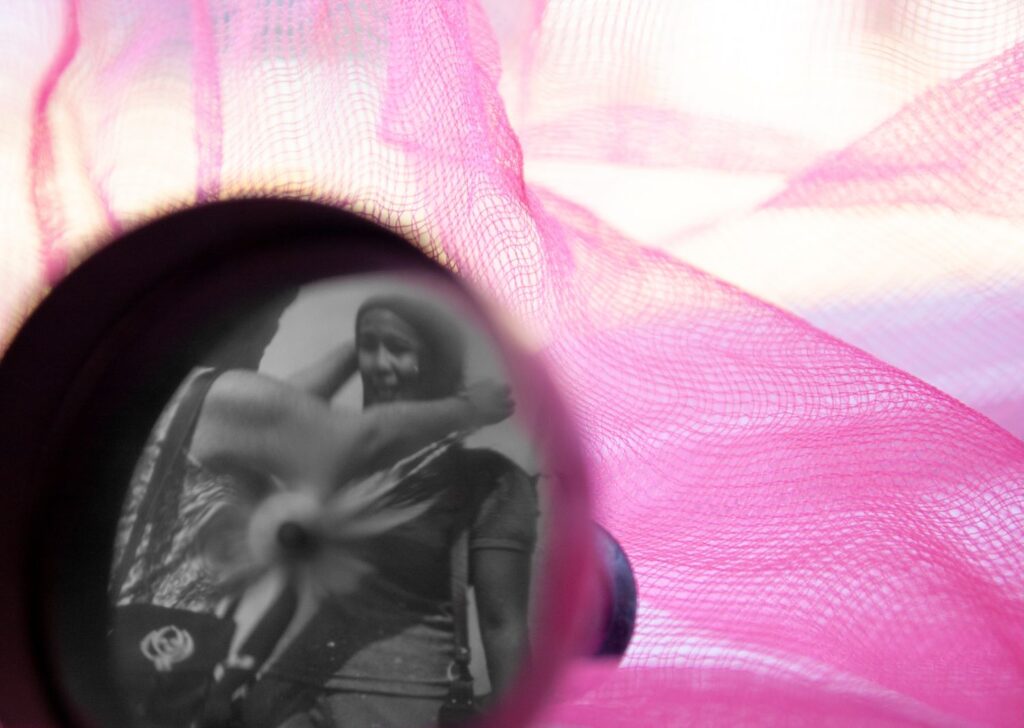
Image Credit: Elisabeth Vasquez Hein, Departure
What is your photographic process?
When I was working on my thesis, my photographic process involved a lot of still lifes and self-portraiture. My intention was always to connect to the object I was photographing (which sometimes was myself), to be in relation to it. So I thought a lot about composition and placement, distance and proximity, how to shrink the gap between myself as the photographer and the object I was seeing.
These days my process is oriented towards working with archives and pre-existing photographs. With the loss of my father and sister in 2022, my creative efforts have been essential to my grieving process and vice versa. I often will use old photographs as writing prompts, or I will write about a concept and later make a photo collage to reflect the ideas that came up in the writing. I’m interested in creating new images out of fragments of the old. I’ve been incorporating photos I made years ago, combining them with photos taken by family members, or fragments of ephemera (such as handwritten letters, objects I’ve inherited, etc.). I like to think of my photo collages as collaborations with something larger than myself as I think about broader, historical contexts, and stories carried through DNA across generations.
Since graduating from the PCNW certificate program in 2019 and during your certificate thesis work, what themes have you explored?
Generational trauma; silences; erasure; collective memory; language; intimacy; belief systems; grief and loss; objects (especially plants, food and textiles) as metaphor; mother-daughter relationship; altars.
Seems you have many creative disciplines to draw on. Which creative medium(s) (photography, writing, mothering, workshop facilitation, etc.) do you prefer to use these days?
Writing has been my prominent creative discipline for the past two and a half years. Since deciding to write a book, I’m trying to ride the beginning waves of momentum as much as I can because I know this will be a multi-year journey. But I do like the idea of mothering as a creative discipline, because mothering has definitely shaped my day-to- day life and shares similar characteristics with other creative mediums – curiosity, self-compassion, presence, practice, observation, and devotion.

Image Credit: Elisabeth Vasquez Hein, Buyo
Have you combined or plan to combine your photography and writing? For example, are you interested in making books? Or exhibitions with text?
Yes, I am working on two book-length projects. One is a memoir in essays which will be punctuated with photography. The other is a photo book which will be punctuated with prose. It’s important to me that my work lives in book form, as books have always been central to how I connect with the world. I think the feel of and interaction with paper – the way one holds and opens a letter sent through postal mail – matters.
I noticed in an online interview that you wished to be asked: “What are you hoping to release from carrying and give back to your ancestors?” Is there a photographic project that you have completed or plan to do that does this?
Photo collage has allowed me to deconstruct ancestral narratives which may have been unhealthy/damaging. The act of investigating and dissipating these narratives releases me from having to carry them. Telling my ancestors’ stories through imagery is both liberatory and a gift. I want to give back to them the gift of being seen.
Recent or upcoming photographic exhibitions (such as in the PCNW auction!) or projects?
While I don’t have any exhibitions coming up, I have been in conversation with another multi-disciplinary artist (also a PCNW alumn) about how we want to share our work outside of traditional parameters of gallery spaces, such as in a home salon. We’ve been talking about how being in community with others while developing a project can be powerful, sometimes more so than the finality of presenting polished work to strangers. Having artwork in the PCNW auction this year is meaningful to me because the piece (a photo collage) is related to what I’m currently working on – themes I am still in the process of delving into. I’m happy to have the work on view with a community I love and that has supported me as an artist for the past decade.
For more about Elisabeth Vasquez Hein:
www.elisabethvasquezhein.com
Instagram @fuzzybrowngirl
Upcoming Events
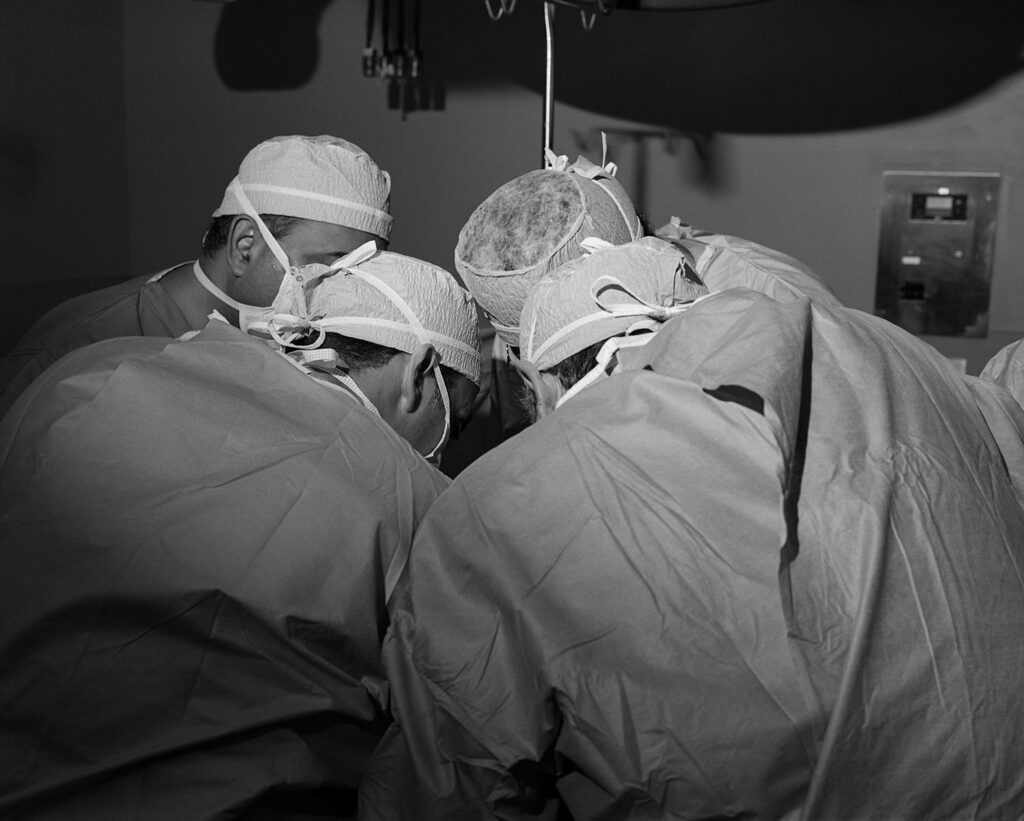
Image Credit: Tony Chirinos
OCTOBER 19, 2024
The acclaimed artist Tony Chirinos is coming to Seattle and PCNW, the PCNW Alumni Committee, and The Seattle Light Room (run by alumn Jenny Hansen Das) are excited to announce two unique opportunities to engage with the artist and explore his evocative work.
1-2pm @ PCNW | Building a Photographic Career on Difficult Subjects: A Conversation on Being an Artist, Teacher and Mentor
Decades ago, Tony Chirinos transitioned from working as a medical photographer to making personal work about mortality, fragility, and the cultural elements that influence how we experience them. Sometimes brutal and always beautiful, Tony’s images have helped him build a successful career as an artist. After years of being widely featured and internationally exhibited, he published his first monograph with Gnomic Books, and in 2023, received a coveted Guggenheim fellowship. In an intimate conversation with Humble Arts Foundation co-founder Jon Feinstein and PCNW faculty and board member Anna Ream, Tony will discuss developing his dynamic bodies of work from idea to publication and exhibition, and how mentorship – as a mentor and mentee – can be an unparalleled path to artistic growth and success.
6-9pm @ The Seattle Light Room | Gallery Opening & Book Signing
Join us at The Seattle Light Room (5040 Wilson Ave S Seattle, WA 98118) for the official opening of The Precipice, a solo exhibition of Tony Chirinos’ work. Meet the artist in person and purchase a signed copy of his first monograph. Enjoy an evening of art, conversation, and celebration in a vibrant community space dedicated to showcasing local photographic talent.
About The Precipice
The Precipice explores the delicate balance between life and death, drawing from Chirinos’ experience as a hospital photographer. The series, composed of three distinct projects — Surgical Theater, Morgue, and Tools — portrays the human body in states of vulnerability and transformation, capturing both the drama and the routine of medical environments. As Chirinos explains, “Surgery was like an opera, a pageant; the actors, props, stage, and lighting all hinging viscerally to the end of each patient’s earthly tale.” His work invites viewers to confront the fragility of existence and reflect on the cultural and personal associations we hold around death.
NOVEMBER 8, 2024
6pm @ PCNW | Artist Talk with Mark Templeton
Photographic Center Northwest and Solas Gallery (run by alumni Cian Hayes and Al Varady) present an engaging artist talk with Mark Templeton, a Canadian media artist and teacher, whose artistic practice spans audio, video, photography, and appropriated images. In this talk, he will discuss his career, past projects and photobooks, the blending of media and forms in those projects, with a specific focus on his latest project A GUIDE TO INNER LIGHT. Templeton’s show A Guide to Inner Light will be showing at Solas Gallery throughout November and December.
Alumni Critique Groups
Are you a graduate or current student of PCNW’s Certificate in Fine Art Photography?
You’re invited to join us at one of our Alumni Critique Groups! Feel free to join in at any time to either group and bring new work to share.
SEWARD PARK
Meets First Wednesday of every month @ 4 – 6pm
Where: Chuck’s Hop Shop Seward Park / 5041 Wilson Ave S. Seattle, WA
More info: Jenny Hansen Das at jenny@jennyhansendas.com; Janet Politte at jmp.000@icloud.com; or Gwen Emminger at gwenemminger@gmail.com
WEST SEATTLE
Meets Second Wednesday of every month @11am – 1pm
Where: West Seattle Uptown Espresso / 4301 SW Edmunds St. Seattle, WA
More info: Al Varady at alvarady@gmail.com
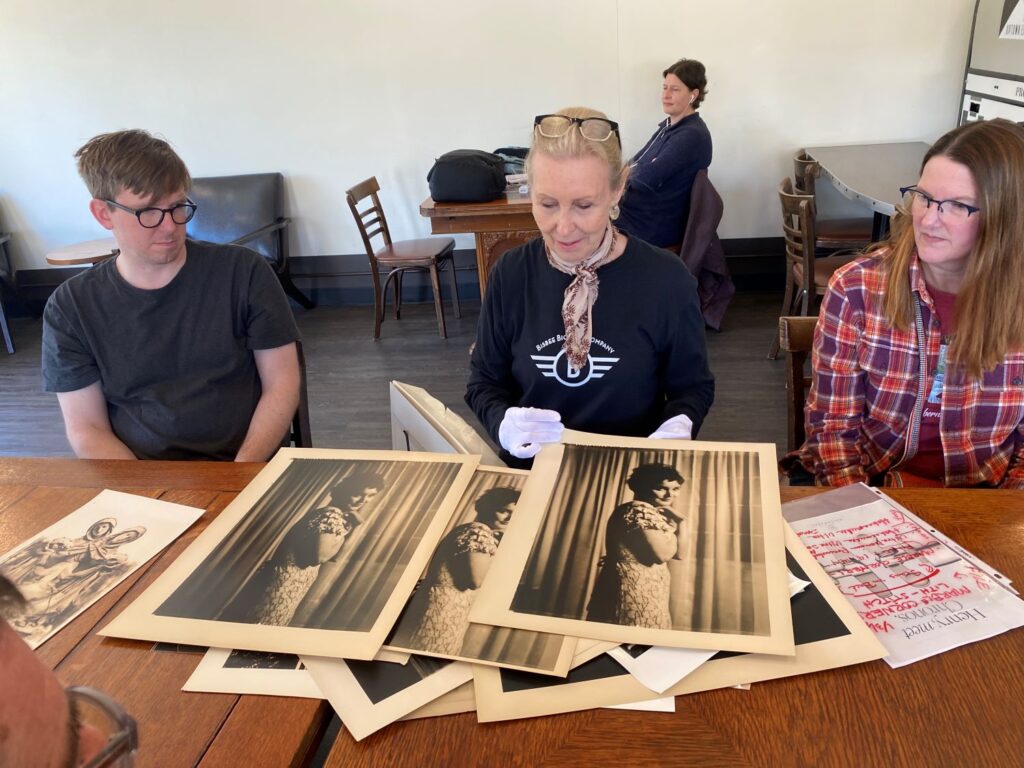
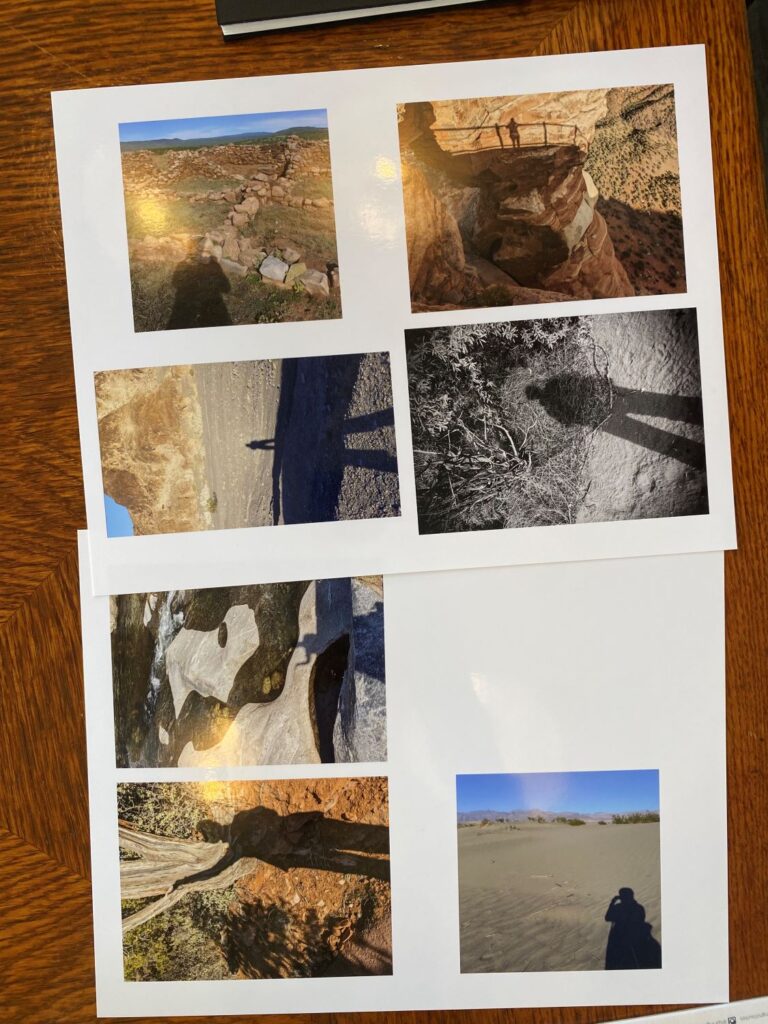
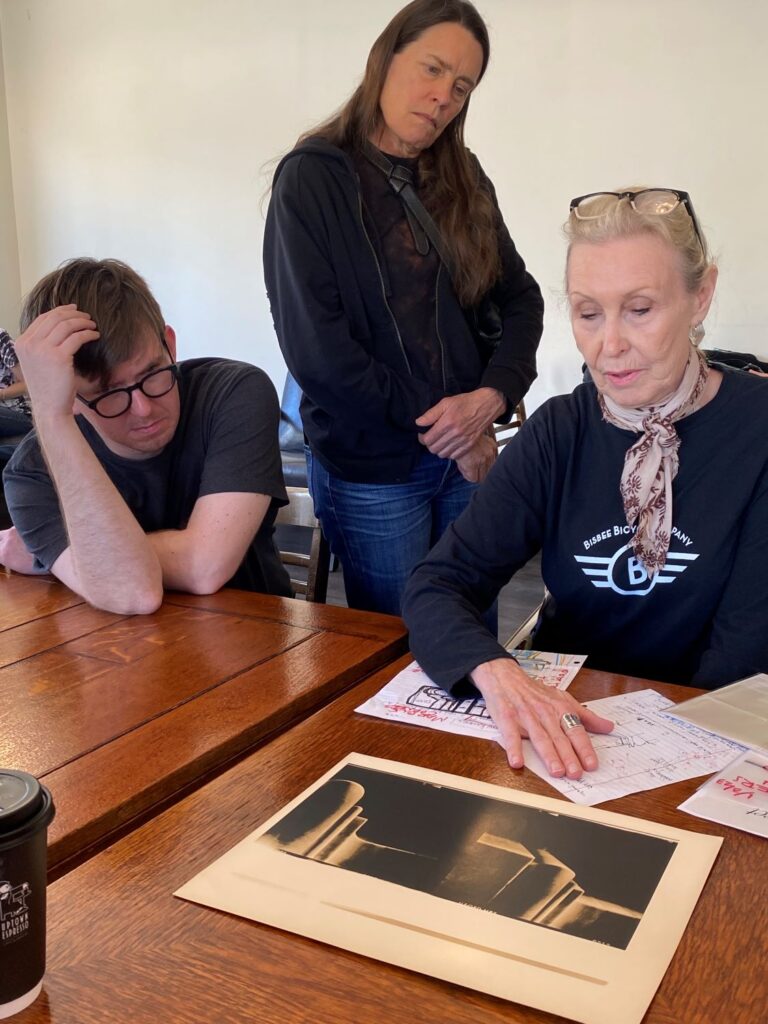
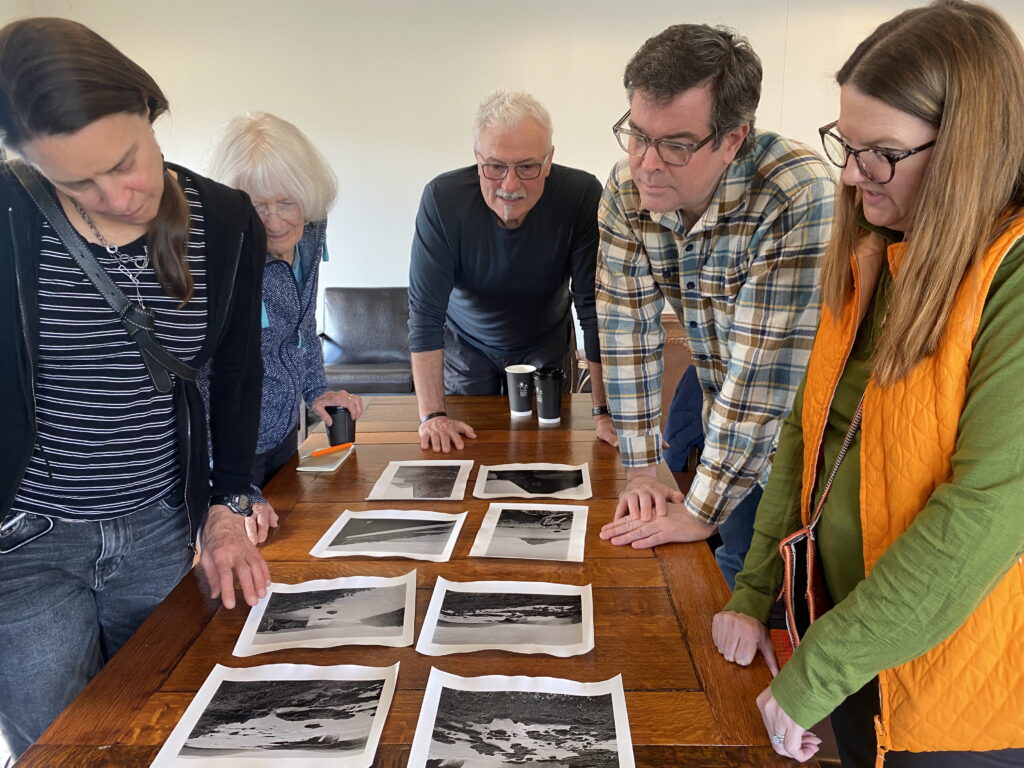
Image Credits: Lisa Ahlberg, West Seattle Critique Group reviewing work by Marianne McCoy and Karen Howard
Looking & Listening
From Al Varady…
From Cian Hayes…
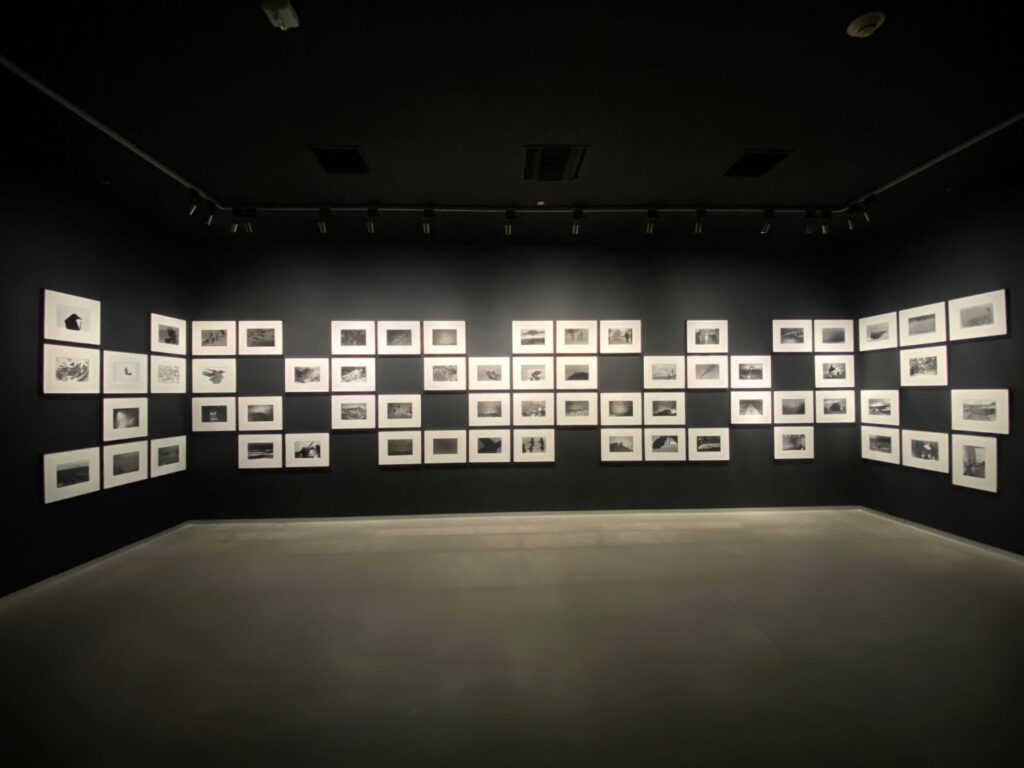
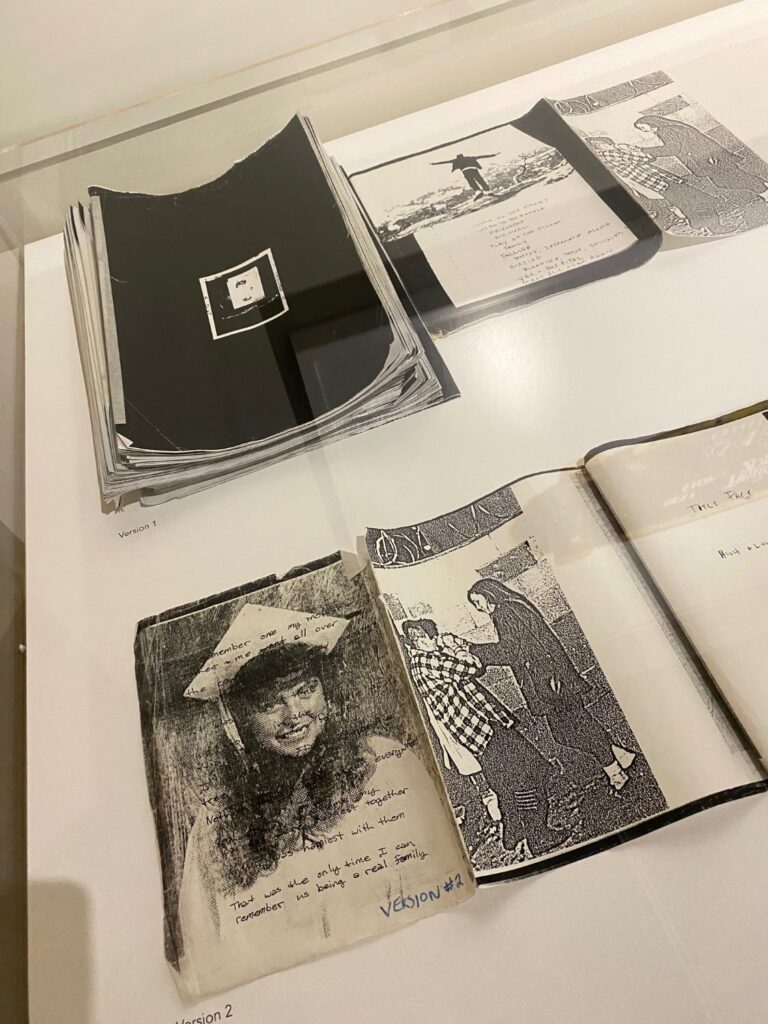
Clockwise from Top Left: Masahisa Fukase’s Karasu (Ravens); Works by Jim Goldberg; Curran Hatleberg photos from book River’s Dream; Work by Vasantha Yogananthan from A Myth of Two Souls; One of several maquettes of Jim Goldberg’s Raised by Wolves
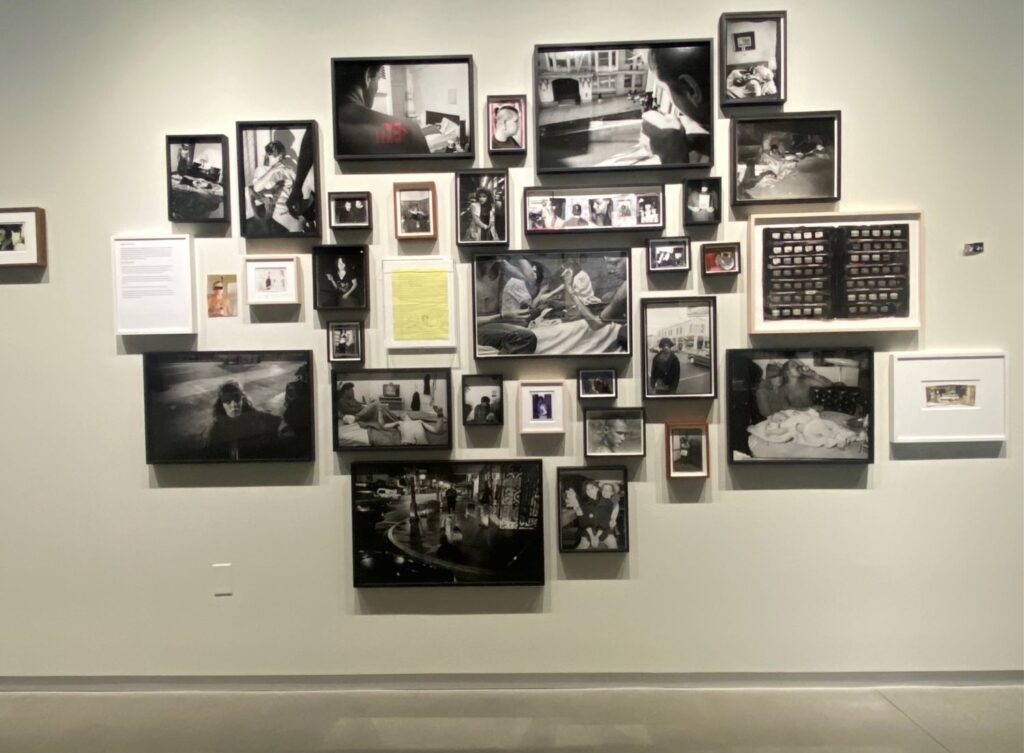
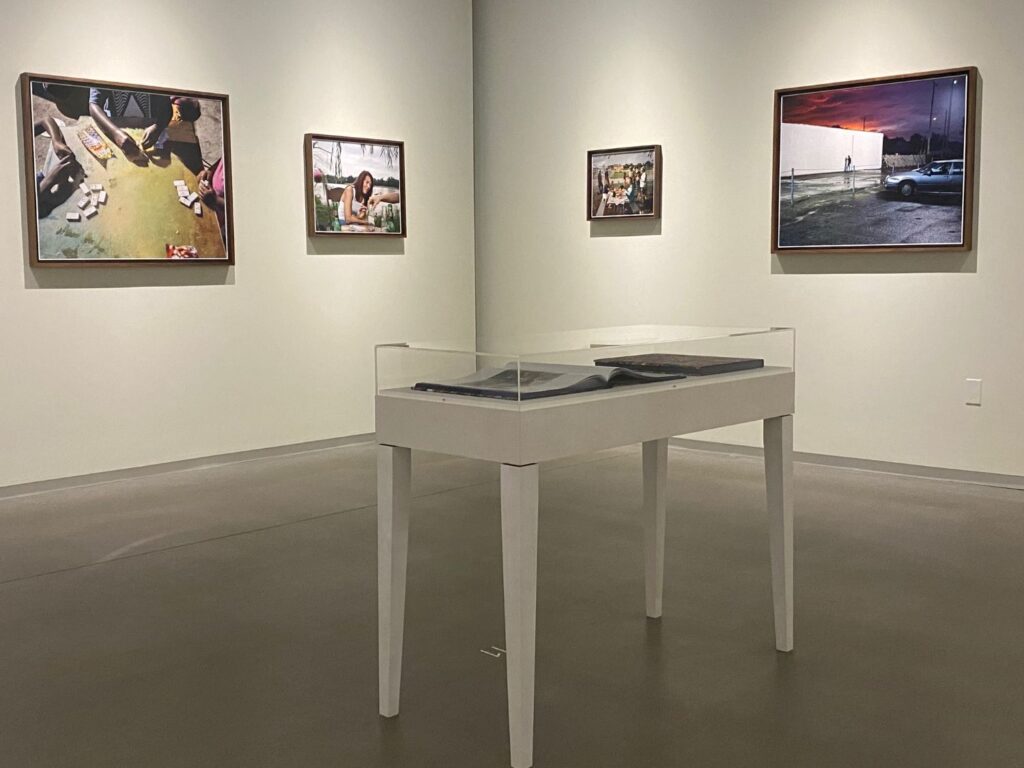
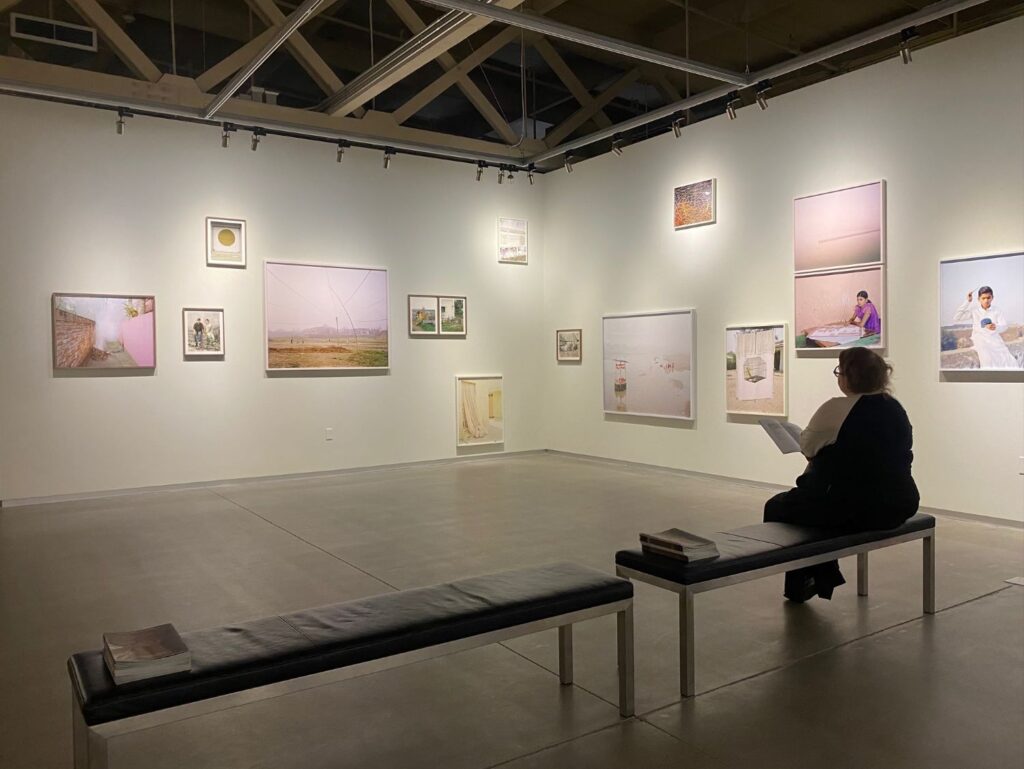
Image Credits: Lisa Ahlberg, Pier 24 “Turning the Page” Exhibition Installations
From Lisa Ahlberg…
Walk, Run, Fly or Drive. Don’t miss the Turning the Page exhibit in San Francisco’s Pier 24 — a celebration of the photobook.
From Gwen Emminger…
Alumni Association Update
What is the Alumni Association and who is a member? The PCNW Alumni Association includes and is for all graduates of the Certificate in Fine Art Photography. We have a volunteer leadership committee that seeks to deepen the connection between Alumni, current Certificate Students, and PCNW, and explore ways in which we can further support, elevate, and celebrate one another.
Are you a graduate who is interested in getting more involved? We intend to renew the committee on a regular basis, with new members, and think this group can lead some great initiatives. Reach out to us at alumni@pcnw.org if you’re interested in joining the leadership committee, have ideas to help foster connection and professional development, or if you’d like to support upcoming initiatives.
Are you an alumn with an upcoming exhibition, book launch, lecture, portfolio review, or other event that you’d like us to feature in a future Alumni Newsletter and/or on the PCNW Alumni page? Tell us about what you’re up to by completing the Alumni Survey Form or e-mail us at alumni@pcnw.org.
Posting on Instagram? Add another hashtag to your work: #pcnwalumni
Thank you to our current volunteer leadership committee members: Lisa Ahlberg, Gwen Emminger, Jenny Hansen Das, Andy Holton, Janet Politte, Matt Ragen, Anna Ream, and Al Varady. Our Chairperson is Gwen Emminger.
Additional thanks to the alumni who contributed to making this issue of the newsletter happen, especially: Lisa Ahlberg, Jennifer Brendicke, Joan Dinkelspiel, and Gwen Emminger.
